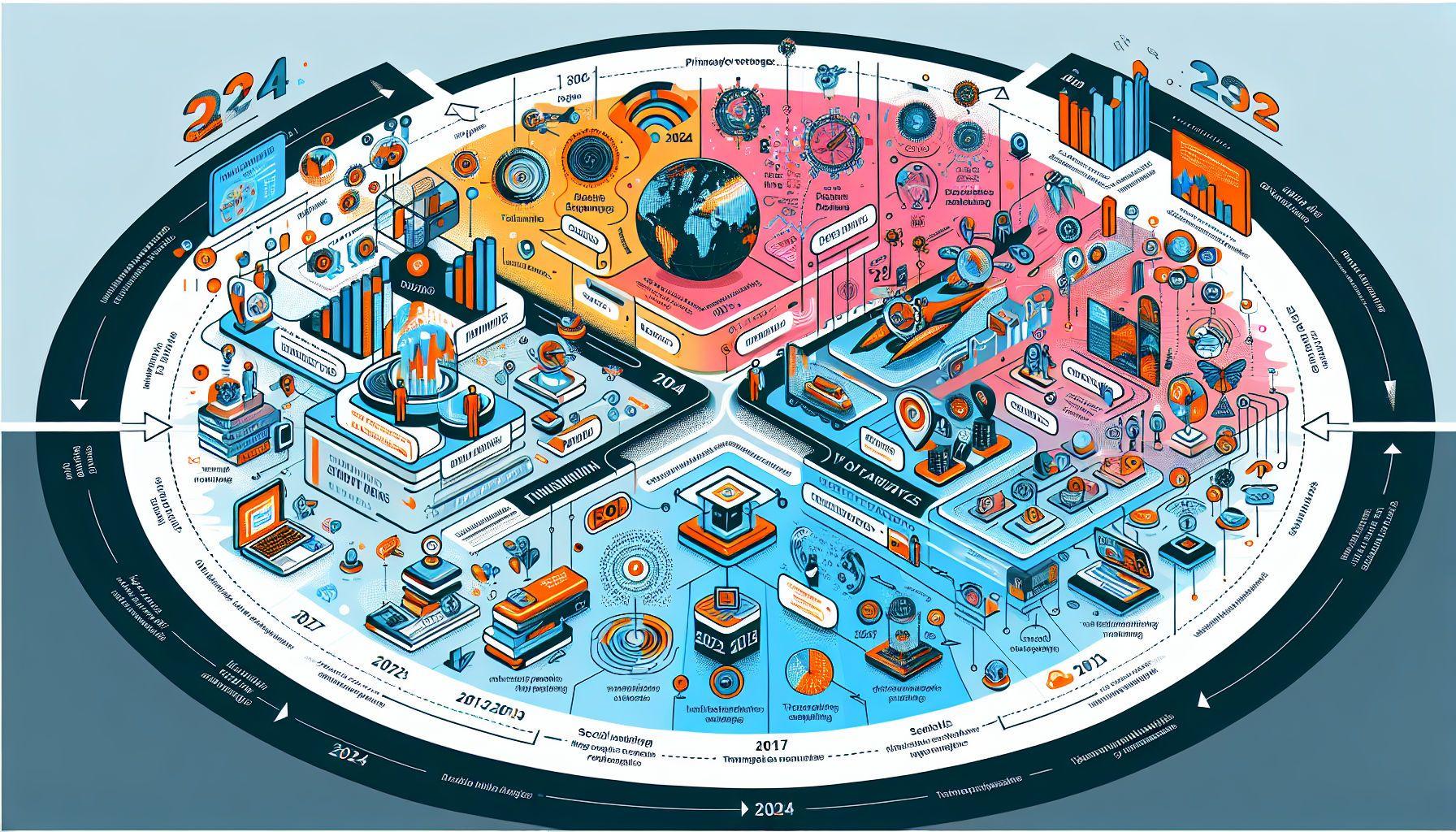How to Use Web3 Technologies to Attract Customers
October 18, 2024
•
8 minutes

Content
Web3 and Marketing: How to Use Decentralized Technologies to Grow Your Customer Base
The digital age is rapidly evolving, and Web3 has become a crucial part of this transformation. Blockchain-based interactive platforms open up new opportunities for businesses. Web3 is about decentralization, security, and transparency—making it an ideal tool for attracting customers. In this article, we’ll explore how to leverage these technologies to grow your customer base and boost loyalty.
1. Create Your Own Token
Creating a branded token can be a powerful way to engage your audience and encourage participation in your business. Tokens can be used as rewards for customers taking part in activities like submitting reviews, attending events, or joining referral programs.
Examples of token usage:
* Loyalty platforms: Instead of traditional reward points, brands can issue tokens with real value, redeemable for products or services. For example, users might earn tokens for participating in promotions and redeem them for discounts or exclusive offers.
* Voting and decision-making: Tokens can serve as voting tools, enabling customers to help decide on new products, features, or improvements—boosting engagement.
Business benefits:
* Increased engagement: Customers feel like part of the ecosystem and become active participants, strengthening brand connection.
* Higher loyalty: Tokens encourage repeat purchases and ongoing brand interaction.
2. Use Smart Contracts
Smart contracts are self-executing agreements with conditions written directly into code. They provide transparency and security for transactions between you and your customers, eliminating the need for intermediaries.
Examples of smart contract usage:
* Guarantees and refunds: If a product isn’t delivered on time, a smart contract can automatically issue a refund.
* Subscription payments: Smart contracts can automate subscription billing and renewals if certain conditions are met.
Business benefits:
* Transparency: All conditions are embedded in code, building trust.
* Lower operational costs: Eliminating intermediaries reduces overhead.
3. Develop Decentralized Applications (dApps)
Decentralized applications (dApps) let users interact with your product directly, without intermediaries. Built on blockchain, dApps offer enhanced security and transparency—key for customer trust and loyalty.
Examples of dApp usage:
* Marketplaces: Build a dApp to sell digital goods, allowing direct peer-to-peer transactions without platforms like Amazon or eBay.
* Blockchain-based services: Use dApps for bookings, ticket sales, or services like real estate rentals.
Business benefits:
* Better user experience: Customers interact with products/services directly, without delays or fees from third parties.
* Transparency and security: Users know their data and transactions are safe.
4. Integrate NFTs into Your Marketing Strategy
Non-fungible tokens (NFTs) are unique digital assets that can be used for content creation and distribution. NFTs are a powerful marketing tool, generating buzz and exclusivity around your brand.
Examples of NFT use:
* Exclusive content: Brands can issue limited-edition digital goods or artwork that users can buy or earn through marketing campaigns.
* Event tickets: NFTs can serve as tickets for exclusive concerts, webinars, or live experiences.
Real-life examples:
* Coca-Cola launched a series of NFTs featuring unique digital items and access to virtual events, increasing fan engagement and innovation perception.
* Nike introduced CryptoKicks, virtual sneakers represented as NFTs that users can collect and trade.
Business benefits:
* Brand buzz: NFTs generate hype and attention for products or events.
* Enhanced customer loyalty: Exclusive digital assets and access to unique events deepen customer attachment to the brand.
5. Build a Community
Creating a community around your brand is essential in Web3. Communities drive engagement and feedback. The more active your community, the more loyal your customers.
Community-building examples:
* DAOs (Decentralized Autonomous Organizations): These are member-run communities governed by blockchain. Brands can form DAOs where users vote on decisions like product releases or strategy changes.
* Forums and discussion platforms: Set up a space where users can talk about your products, share ideas, and contribute to product development.
Business benefits:
* Customer participation: When users feel involved, they become brand advocates.
* Organic growth: Communities naturally draw new members through recommendations and word-of-mouth.
Practical Tips for Implementing Web3
1. Start Small
* Experiment with NFTs or a DAO to test audience response and explore how Web3 supports your business goals.
2. Partner with Developers
* Building dApps, tokens, and smart contracts requires technical expertise. Work with experienced developers to create secure, reliable solutions.
3. Educate Your Audience
* Many users are unfamiliar with Web3. Provide guides and resources to help them understand the benefits and functionality.
4. Focus on Security and Transparency
* Web3 offers robust security, but users must understand how their data is protected. Publish clear privacy policies and explain how smart contracts work to build trust.
Conclusion
Web3 offers a new way to connect with customers by providing powerful tools for attracting and retaining users. From launching branded tokens and smart contracts to creating dApps, integrating NFTs, and building communities—Web3 can be a cornerstone of a successful marketing strategy. Brands that embrace these innovations now will gain a strong competitive advantage in the emerging decentralized digital economy.
Keywords:
Web3 marketing, blockchain in business, token creation, smart contracts, dApps, NFT marketing, DAO, Web3 community, customer acquisition via Web3, marketing of the future.
Recent posts








